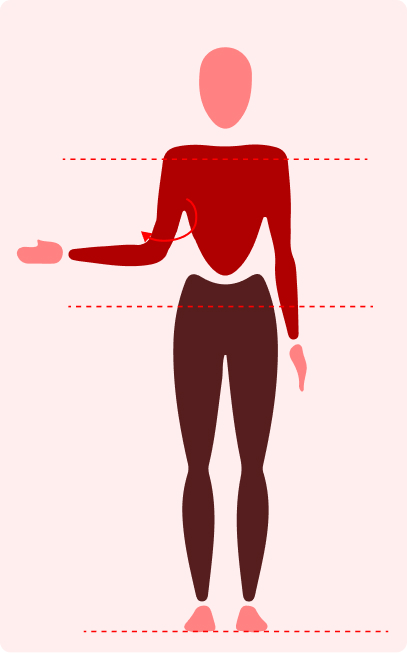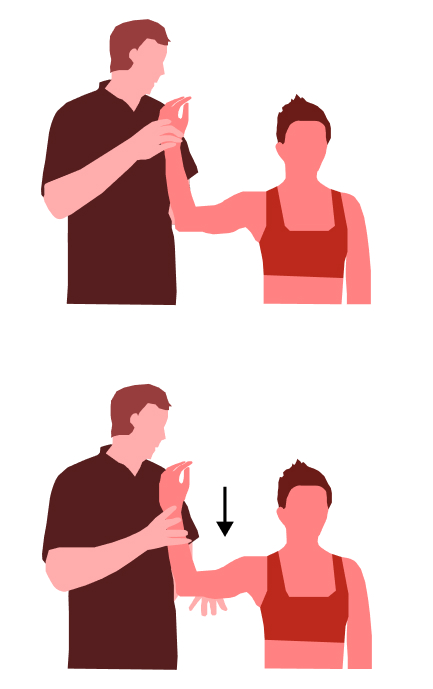In a world where speed and accuracy are paramount for successful task completion, the health of our most flexible joints shoulders and arms, body part with the most bones, plays a crucial role in our ability to efficiently perform data input tasks. When it comes to activities like typing on a keyboard or throwing a ball, maintaining optimal functionality of these body parts is of utmost importance. Self-testing and self-assessment for accurate data input in this context is instrumental in preventing issues such as repetitive strain injuries and ensuring productivity.
In this blog post, we will explore the importance of self-assessment, various methods for testing shoulder and arm functionality, share some interesting facts, and conclude on the significance of these practices.
The Importance of Shoulder and Arm Testing
Testing the functionality and performance of your shoulders and arms is essential for several reasons.
Firstly, it allows you to identify any potential issues or limitations that may impact your ability to input data accurately. Regularly assessing your shoulder and arm movements can help you detect early signs of strain or discomfort, enabling you to take proactive measures to address them before they escalate. Secondly, self-testing promotes self-awareness and empowers you to take control of your physical well-being. Understanding the capabilities and limitations of your shoulders and arms enables you to make informed decisions regarding ergonomics, posture, and training habits to prevent injuries and enhance performance. Third, this time lets dominantly address the decelerators and symmetry between the upper limbs.
Self-Testing Methods for Shoulders and Arms
1. Rotator Cuff Strength Test
- Stand or sit with your arms by your sides and elbows bent at 90 degrees.
- Slowly rotate your arms outward, away from your body, while keeping your elbows at your sides.
- Hold this position for a few seconds before returning to the starting position.
- Repeat the outward rotation movement to assess the strength and stability of your rotator cuff muscles.

2. Infraspinatus Drop Test
- Stand upright with arms relaxed at your sides.
- Raise your arms laterally to shoulder width, palms facing downwards.
- Apply gentle downward pressure on your arm against an obstacle, inducing eccentric loading of the infraspinatus muscle.
- Maintain shoulder stability and slowly lower your arm towards your body in a controlled manner.
- Observe basic elements of biomechanics, such as movement control, shoulder stability, and strength symmetry between the left and right sides.

3. Grip Strength Test
- Hold the weight or resistance object in your hand in a comfortable grip position.
- Using the hand dynamometer, the initial maximal grip strength is measured.
- Slowly lower the weight or resistance object to the starting position over a specified time period (e.g., 3 seconds).
- The hand dynamometer is used again to measure the grip strength during the eccentric phase of the movement.
- The difference between the initial grip strength measurement and the grip strength measurement during the eccentric phase indicates the eccentric grip strength.

The Hidden Gem: Infraspinatus
Infraspinatus injuries and trigger points are common sources of pain and dysfunction in the shoulder and arm. The infraspinatus muscle, located on the back of the shoulder blade, is prone to overuse injuries and the development of trigger points, often resulting from repetitive movements with the lack of eccentric strength especially in deceleration and overactive internal rotators, anteriorly tilted scapula, or trauma. When affected, these issues can manifest as sharp or dull pain in the shoulder and upper arm, especially during overhead arm movements, and may cause referred pain to other areas.
Restricted shoulder mobility, discomfort, and functional limitations can impact daily activities such as reaching, lifting, and throwing. Timely diagnosis and appropriate treatment, including physical therapy, massage, and targeted exercises, are essential for managing and resolving infraspinatus-related problems. By addressing these issues promptly and incorporating preventive measures, individuals can improve shoulder function, alleviate pain, and maintain optimal arm health and mobility.
Conclusion
In conclusion, the significance of symmetry in function and eccentric strength in the upper limbs cannot be overstated when it comes to optimizing performance in sports. Achieving balance and coordination through symmetrical development is crucial for enhancing overall athletic abilities and preventing injuries. Eccentric strength plays a pivotal role in deceleration during movements, allowing athletes to control their actions effectively, reduce the risk of strains or tears, and improve performance outcomes.
By acknowledging the importance of these factors and incorporating targeted training strategies to enhance symmetry, eccentric strength, and deceleration abilities, athletes can elevate their skill levels, reduce the likelihood of imbalances or injuries, and ultimately excel in their chosen sports. Emphasizing these aspects of upper limb function not only fosters better athletic performance but also promotes long-term health and well-being for individuals striving to reach their full potential in sports and physical activities.
References
- Page, P. and Uhl, T.L., 2017. Prevention of shoulder injuries in overhead athletes: a science-based approach. Sports Health, [online] Available at: https://www.ncbi.nlm.nih.gov/pmc/articles/PMC6142743/ [Accessed 30 August 2024].
- Bini, R.R., Hume, P.A., Croft, J.L. and Kilding, A.E., 2022. Force, Power, and Morphology Asymmetries as Injury Risk Factors in Physically Active Men and Women. Symmetry, 14(10), p.2088. Available at: https://www.mdpi.com/2073-8994/14/10/2088 [Accessed 30 August 2024].




